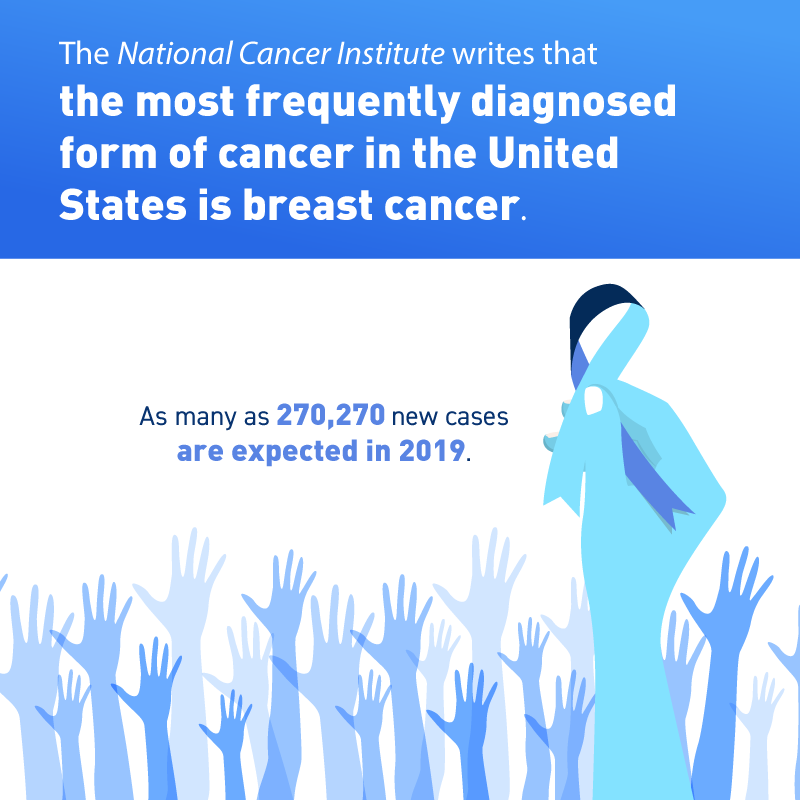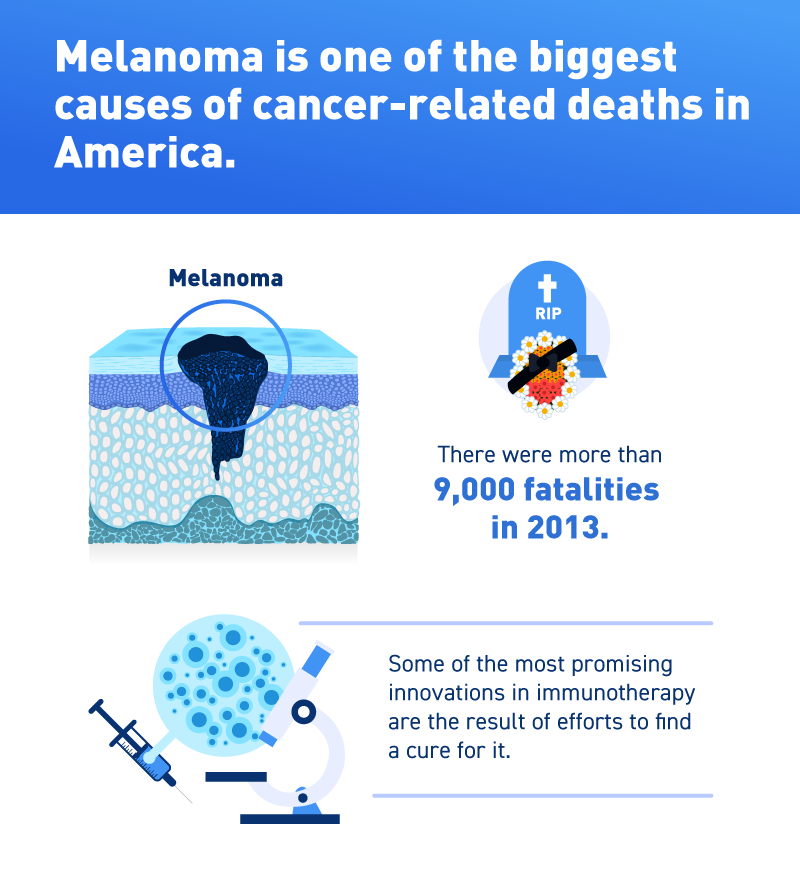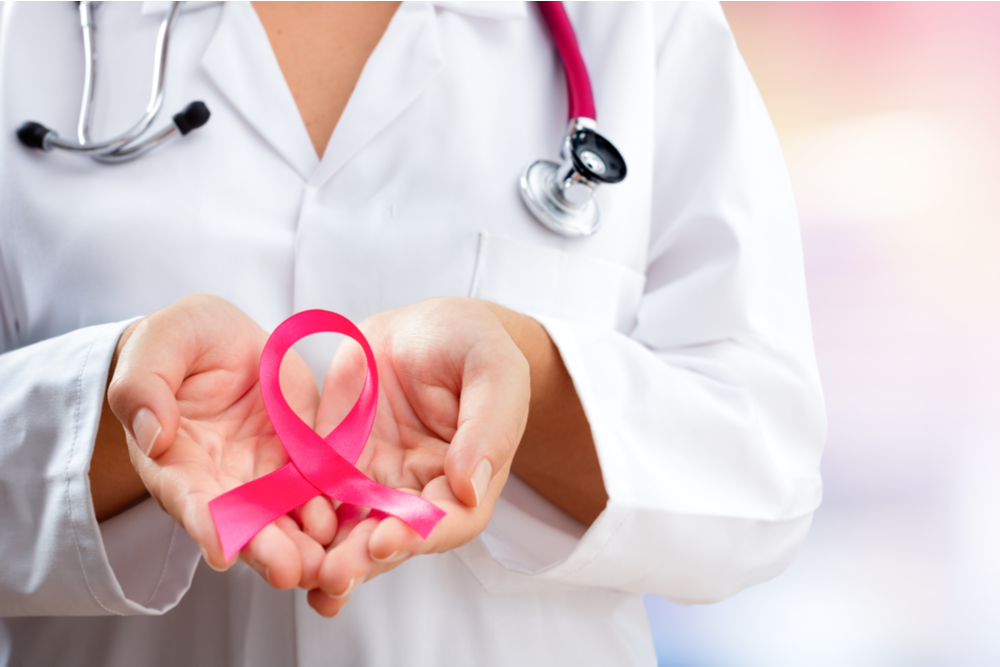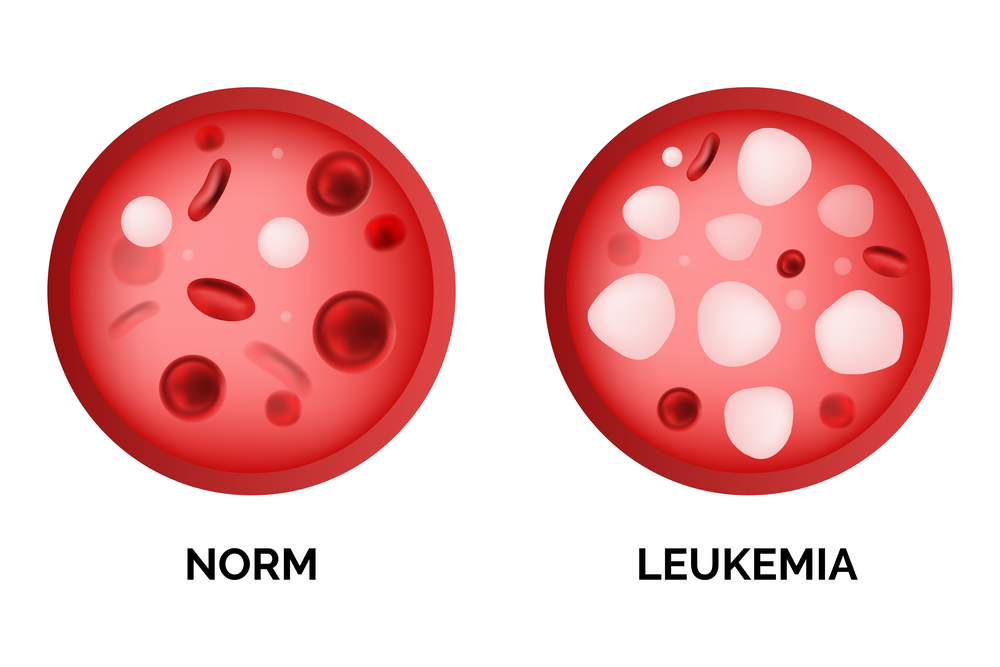There are many different kinds of cancers, but they all have some fundamental characteristics.
Cancer refers to a group of diseases that develop when abnormal cells quickly divide, spreading to other tissues and organs, and compromising their functioning.
Different forms of cancers are named for the areas in which they originate. Cancer that starts in the lungs and spreads to the liver is still called lung cancer.
This wide variety is what makes cancer one of the leading causes of death in the world.
Breast cancer is the most commonly diagnosed cancer in America. (Learn More) Primary risk factors include aging, lack of physical activity, and a family history of cancer. (Learn More) Treatment is usually in the form of surgery, with medications to shrink the tumor and ensure that it does not spread. (Learn More)
Lung cancer is responsible for the most cancer-related deaths. (Learn More) It usually strikes people in their 60s, and symptoms are often innocuous until real problems emerge. (Learn More) Chemotherapy for lung cancer covers palliative care, where the disease has spread to the point where the best use of medication is to make the patient comfortable. (Learn More)
Skin cancer is the most common form of cancer in America. It’s often the result of overexposure to the sun and unsafe use of artificial tanning methods. (Learn More) Depending on the stage of the disease, medication can come in the form of creams and ointments, oral therapy, surgery, and radiation. (Learn More)
Breast Cancer
The National Cancer Institute writes that the most frequently diagnosed form of cancer in the United States is breast cancer. As many as 270,270 new cases are expected in 2022.
According to the Centers for Disease Control and Prevention, breast cancer develops when cells in the breast grow too rapidly.
The human breast is made up of three main parts: lobules, ducts and connective tissues. Each of these can host cancerous cells. The lobules are glands that produce milk, which is carried by ducts (tubes) to the nipple. Connective tissue holds all the components of the breast together. Most breast cancers start in the lobules or ducts.
As with other forms of cancer, blood vessels and lymph vessels can spread the cancer out of the area of origin. When this happens, the cancer has metastasized.
There are two main kinds of breast cancer:
- Invasive lobular carcinoma, where the cancer cells spread from the lobules to neighboring breast tissues
- Invasive ductal carcinoma, where the cancer cells grow outside the ducts, into other parts of the breast tissue
In both cases, the cancer cells can metastasize to other parts of the body

Risk Factors
Research has shown that the risk for developing breast cancer comes down to a combination of factors — primary among them is being female and approaching (and passing) the age of 50.
Even though men do not have the lobules to produce breast milk, they still have the connective tissues where cancerous cells can grow. While rare, men who meet the criteria of other risk factors can develop breast cancer.
It is possible for some women to develop breast cancer even if they do not appear to have any other risks. This can be due to genetics (having a family history of breast cancer), lifestyle, or a completely unknown factor.
As with all diseases, simply having the risk factors does not mean that a person will develop breast cancer. The CDC explains that even though the risk factors are so numerous that most women will have some of them, “most women do not get breast cancer.”
It is still important for women to talk with their doctors about how they can lower their risks (limiting alcohol consumption, cutting out smoking, controlling weight, and being physically active). Regular screenings are always advisable.
Some risk factors for breast cancer cannot be changed or avoided. Women should be aware of how these factors contribute to the likelihood of developing breast cancer.
In addition to age and genetics, women who had early menstrual periods before the age of 12, and who started menopause after 55, will have a higher than average risk of breast cancer because of their longer exposure to hormones.
Women who have fuller breasts (with more connective tissue than fatty tissue) are more likely to get breast cancer, and the density of tissue can make it difficult for mammograms to detect tumors.
Breast Cancer Treatments
Breast cancer can be treated in several ways. Mastectomy, the removal of cancerous breast tissue, also entails the partial or complete removal of the breast itself to ensure that the abnormal cells do not spread to other parts of the body.
The American Cancer Society writes that doctors will also prescribe a course of chemotherapy, to reduce or eliminate the cancer cells. The drugs come in pill form for oral consumption, or they can be delivered intravenously. Regardless of the method of administration, the drugs travel through the bloodstream to get to the cancerous cells.
The medications used to treat cancer are often very powerful, so they cause a variety of side effects in patients. Women receiving chemotherapy for breast cancer will often experience early menopause, hair loss, nausea, and chronic fatigue.
It might also be necessary to use hormone therapy to prevent hormones, especially estrogen, from unwittingly feeding the growth of cancerous cells in breast tissue. These drugs are given with the idea of inducing the ovaries to cease production of such hormones.
Some women might qualify for tamoxifen (Nolvadex) therapy before and after menopause. Postmenopausal women might also get aromtase inhibitors, which have also been theorized to act as preventative agents for the development of breast cancer.
Other Medications
Other medications used at various points of breast cancer treatment include drugs like fulvestrant, an injection that prevents estrogen from attaching to cancer cells; lapatinib and pertuzumab to stimulate the body’s immune system into fighting cancerous cells; and palbociclib, which starves the cancer’s growth.
In order to maximize the chances of effectiveness, doctors will usually prescribe multiple medications, in addition to surgery, radiation, targeted therapy, or hormone therapy. These will likely have a number of unpleasant side effects, but they can be managed with a lot of treatment and give a patient the best chance at beating breast cancer.

Lung Cancer
Lung cancer is the second most common form of cancer, and it is the primary cause of death by cancer. Every year, there are 228,150 new cases of lung cancer and 142,670 fatalities directly attributable to lung cancer.
The American Cancer Society writes that more people die from lung cancer than from colon cancer, breast cancer, and prostate cancers combined, making lung cancer the leading cause of cancer-related deaths among men and women “by far.”
Lung cancer develops mainly in older people. Most people who are diagnosed with it tend to be 65 or older, while a minority aged 45 and under can also get the diagnosis. The average age of diagnosis is 70.
Forms and Symptoms of Lung Cancer
The most common form of lung cancer is non-small cell lung cancer, which constitutes as much as 85 percent of all cases. Thirty percent of NSCLC diagnoses are found in the cells that form the lining of the cavities and surfaces of the body, so they occur in the outer part of the lungs. Another 30 percent of lung cancer cases start in the cells that line the respiratory tract.
Around 15 to 20 percent of lung cancers are small-celled cancers, which grow and spread faster than non-small cell cancers. In some patients, the cells of their tumors are both small-celled and non-small-celled.
One of the difficulties with diagnosing and treating lung cancer is that the tumors can grow quite large before symptoms present. Even then, early symptoms often appear as innocuous coughs or other common ailments, so most people don’t think about getting checked out for lung cancer.
Early symptoms of lung cancer can include a chronic or worsening cough, often bringing up blood or phlegm; increasing chest pain; shortness of breath; fatigue; difficulty breathing; and a loss of appetite.
Treatment and Medications
In 2018, WebMD reported on two new drugs that offer a lot of potential in treating lung cancer. One of them, the immunotherapy drug pembrolizumab, was combined with basic therapy and found to reduce the chance that a patient would die by as much as 50 percent, compared to when chemotherapy was used by itself. Researchers also discovered that the combination treatment further reduced the risk that the cancer would metastasize by another 50 percent.
Another study found that patients with advanced lung cancer who received a combination of two immunotherapy drugs (nivolumab and ipilimumab) “were 42 percent less likely to see their disease progress after a year.” Experts talking to WebMD were optimistic that the respective studies improved the armamentarium to fight against the leading cause of cancer-related death in the world.

Chemotherapy and Palliative Treatment
As with most cancers, surgery is the best treatment option for lung cancer, but this is mostly contingent on if the cancer is discovered early. When the cancer has not spread to any blood vessels or lymph nodes, surgery might almost be considered a “cure” for the cancer. It directly removes the abnormal cells before they have had a chance to infect other systems.
For this reason, surgery might be an option for patients who have stage 1, stage 2, and stage 3A non-small-cell cancer.
Chemotherapy options are not administered with the intention of providing a cure (or curative property) for patients with lung cancer. Instead, medications are used as an adjuvant therapy. A patient would likely get both surgery and chemotherapy because of the likelihood of cancerous cells spreading to lymph nodes or other regions of the body.
Another use for medication is as a form of palliative therapy, where the cancer has advanced to the point where it cannot be treated. The new focus is making the patient as comfortable as possible. Medications will be administered to reduce pain, lessen psychological distress, and control the symptoms as much as possible.
Unfortunately, there are some key misconceptions about the role of medications in lung cancer treatment. A 2012 study published in the New England Journal of Medicine found that as many as 70 percent of patients were under the impression that chemotherapy would cure their cancer. They did not understand the supportive (and/or palliative) role that the medications are meant to play.
Palliative chemotherapy has a very different goal than traditional chemotherapy for lung cancer. Patients should talk to their doctor about the goals of the medications they are receiving.
Systemic Treatment
Medications for lung cancer work by killing the cancerous cells. As with most forms of chemotherapy for various cancers, the drugs also unintentionally target normal cells that, like cancer cells, also continuously divide. This is why patients receiving these medications for lung cancer experience hair loss, fatigue, low blood cell counts, and nausea.
In most cases of treating lung cancer, two or more medications are given simultaneously in order to eliminate as many cancer cells as possible. This is because different chemotherapy medications work at different stages of the division of cancerous cells.
Chemotherapy for lung cancer is referred to as a “systemic treatment.” It aims to kill cancer cells anywhere in the body they are found (as opposed to surgery and radiation therapy, which are thought of as “local” treatments). Medications can also be used to shrink a tumor before surgery.
Stimulating the Immune System
Other uses of medications during lung cancer treatment include helping with the symptoms of cancer (such as when the tumor causes difficulty breathing or pain) and to assist immunotherapy drugs (drugs that stimulate the immune system into fighting the cancerous cells).
Sometimes, the body’s immune cells cannot “recognize” the abnormal cells in the lungs. Oncology Times describes this as the cancer cells “hiding from the immune system.” When chemotherapy drugs hit the cancer cells, they scatter the cancerous cells out into the open (into the circulation), allowing the immune cells (boosted by the immunotherapy drugs) to better recognize and kill them.
Medications for lung cancer are given orally, in the form of a pill, but most tend to be administered intravenously. When two or more drugs are given in combination, they are typically given in cycles of three to four weeks, upward of six times. Repeated sessions of chemotherapy increase the chances of treating as many cancer cells as possible, while the cancer cells are in their different stages of division.
Some medication regimes for treating lung cancer start with cisplatin or carboplatin, combined with other drugs, such as docetaxel, etoposide, ifosfamide, or topotecan, among many others).
Medication for lung cancer cannot cure the disease, primarily because the tumors in the lungs become resistant to the drugs over a period of time. Cancer cells will adapt and change to survive the chemical attacks from the medications, a phenomenon known as chemoresistance. When a patient has a recurrence of their lung cancer, different drugs have to be used in their second round of treatment.
Skin Cancer
The Centers for Disease Control and Prevention writes that skin cancer is the most common form of cancer in the U.S.
Anyone can get skin cancer, but some more have a higher risk of getting it than others. Overexposure to ultraviolet light, as a result of being in the sun too much or from tanning beds, is the most preventable cause of skin cancer.
Basal cell and squamous cell carcinomas are the two most common forms of skin cancer. They can be expensive to treat because they cause extensive disfiguring of the skin, but they are both very curable. Melanoma, the third most common kind of skin cancer, is much more dangerous than the other two, and it can cause the most deaths.
Anybody can develop cancerous cells in their skin, but people who have a lighter skin color, or people who have skin that burns, freckles or becomes painful in the sun, have a higher risk of getting skin cancer. People with blue or green eyes, people with blonde or red hair, and those who have a family history of skin cancer are also more likely to develop the abnormal cells in their skin.
But one of the biggest risk factors for this form of cancer is exposure to ultraviolet rays. Some amount of UV ray exposure is good for the skin, writes the Dermatoendocrinology journal, but too much — especially without any protection — significantly raises the risk of cancer. Indoor tanning exposes the skin to very high levels of ultraviolet radiation. Over time, and with unsafe practices, the risk of developing skin cancer can increase with every single tanning session.
Medications and Treatments for Skin Cancer
Regarding treatment and medication for skin cancer, Mayo Clinic writes that cancers that stay in the top layer of the skin can be addressed by applying creams or lotions, which contain anti-cancer chemicals. As with lung cancer, more systemic chemotherapy agents are used to treat skin cancer that has metastasized.
Similar to the treatment of other forms of cancer, most doctors will employ a combination of surgery and chemotherapy (as well as radiation) to kill as many cancerous cells as possible and limit their spread. In cases where the cancer has extended to the point where surgery cannot safely be used, doctors may prescribe oral medications like sonidegib or vismodegib.
Melanoma
Melanoma, the third kind of skin cancer, cannot be cured with the use of medications. Medications like interferon-alpha and interleukin-2 can slow the spread of the disease and offer relief for the symptoms, such as painful lesions and discoloration of the skin.
Melanoma is one of the biggest causes of cancer-related deaths in America. There were more than 9,000 fatalities in 2013. Some of the most promising innovations in immunotherapy are the result of efforts to find a cure for it.
Advanced melanoma has been treated with vaccines or even a genetically modified form of the herpes virus that can infect and kill cancer cells. Other drugs like interferon, nivolumab, or ipilimumab are used to trigger the body’s immune cells into aggressively going after the melanoma cells.
All these options are done with the idea of immunizing the patient’s body against the abnormal cell division taking place, which the body cannot do without treatment and medication.

References
What Do You Want to Know About Cancer? (February 2016). Healthline.
Common Cancer Types. (February 2019). National Cancer Institute.
What Is Breast Cancer? (September 2018). Centers for Disease Control and Prevention.
Male Breast Cancer. (May 2018). Mayo Clinic.
Breast Cancer Prevention: How To Reduce Your Risk. (December 2018). Mayo Clinic.
Dense Breast Tissue: All You Need to Know. (September 2017). Medical News Today.
Chemotherapy for Breast Cancer. (October 2017). American Cancer Society.
Breast Cancer Treatment. (March 2019). WebMD.
Does Growth Hormone Drive Breast and Other Cancers? (October 2007). Endocrinology.
The What, Why And How of Aromatase Inhibitors: Hormonal Agents for Treatment And Prevention Of Breast Cancer. (December 2007). International Journal of Clinical Practice.
Palbociclib and Letrozole in Advanced Breast Cancer. (November 2016). New England Journal of Medicine.
Side Effects From Breast Cancer Treatments. (June 2017). WebMD.
Everything You Need to Know About Lung Cancer. (May 2019). Healthline.
Key Statistics for Lung Cancer. (January 2019). American Cancer Society.
What Are the Signs of Lung Cancer in Women? (September 2017). Medical News Today.
New Drugs May Be Big Advancements in Lung Cancer Care. (April 2018). WebMD.
Can Lung Cancer Be Cured? (March 2019). Verywell Health.
Patients’ Expectations about Effects of Chemotherapy for Advanced Cancer. (October 2012). New England Journal of Medicine.
Chemotherapy for Lung Cancer. (October 2018). Verywell Health.
An Answer to How Cancer Cells Hide From the Immune System. (October 2016). Oncology Times.
Drug Resistance in Non-Small Cell Lung Cancer: A Potential for NOTCH Targeting? (2018). Frontiers in Oncology.
Mechanism of Cell Adaptation. (August 2017). Cancer Journal.
Basic Information About Skin Cancer. (June 2019). Centers for Disease Control and Prevention.
Beneficial Effects of UV Radiation Other Than Via Vitamin D Production. (April 2012). Dermatoendocrinology.
Skin Cancer. (February 2019). Mayo Clinic.
Skin Cancer Treatment. (April 2019). WebMD.
What Are the Symptoms of Skin Cancer? (October 2018). Medical News Today.
What Are the Prognosis and Survival Rates for Melanoma by Stage? (June 2017). Healthline.



